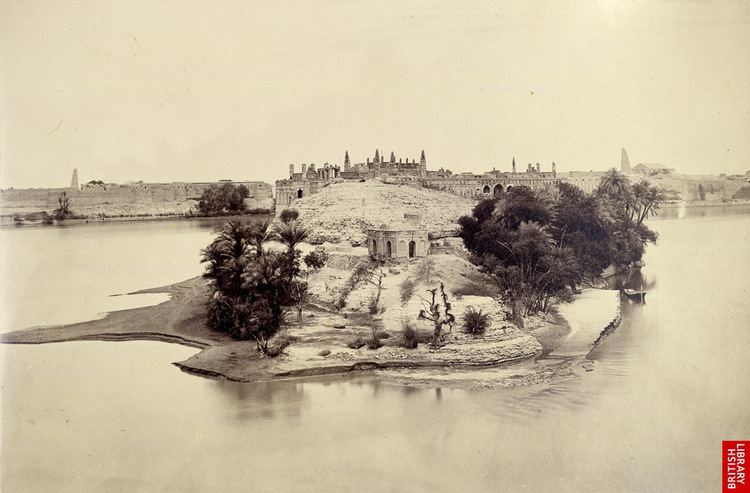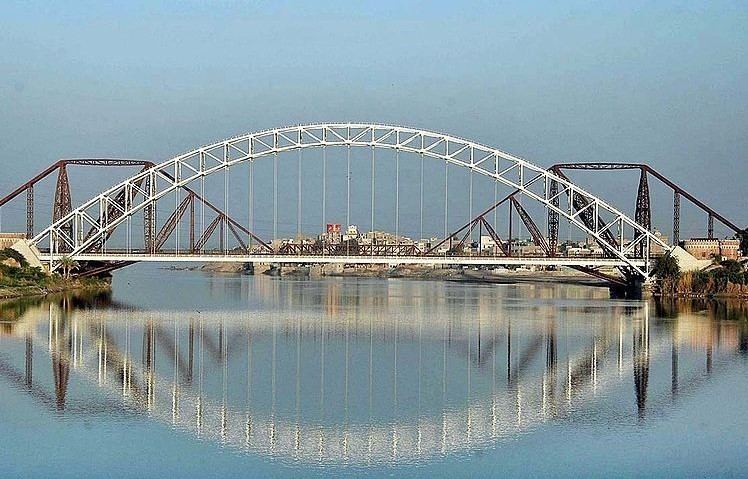Country Area 5,165 km2 | Population 335,551 (1998) | |
 | ||
Colleges and Universities Sukkur Institute of Business Administration, Government Islamia Science College Sukkur | ||
Map of Sukkur
Sukkur (Sindhi: سکر; Urdu: سکھر) is a town in the Pakistani province of Sindh, located on the western bank of the Indus River. It is the 12th most populous city of Pakistan, and the third largest city in Sindh province. The city was founded during British colonial rule at the head-works of the large Sukkur Barrage - used for controlling water flow through vast irrigation works in upper Sindh. Sukkur is located across from the important Hindu pilgrimage centre on Sadh Belo island, and is near the historic town of Rohri - located on the opposite bank of the Indus River.
Contents
- Map of Sukkur
- A breathtaking eve at bukkur island sukkur pakistan
- Sukkur accident death toll hits 42
- Etymology
- History
- Climate
- Barrage
- Agriculture
- Administration
- Notable people
- References

A breathtaking eve at bukkur island sukkur pakistan
Sukkur accident death toll hits 42
Etymology

The word Sakhar means "superior" in Sindhi, and the spelling of the city's name in Sindhi suggests this is the origin of the name.
History
Modern Sukkur was built by the British general Sir Charles Napier in the 1840s, directly across from the historic city of Rohri.
The chosen site for the city was near the old Fortress of Bhakkar, which was built in the beginning of 16th century by Shah Beg on Bukkur island in the Indus River between Sukkur and Rohri.This fortress was captured by the Pashtun king Sher Shah Suri when the Mughal Emperor Humayun was defeated by him but came again under Mughals in 1574 during Akbar's rule.
Climate
The climate of Sukkur is characterised by very hot and hazy summer with dry and cool winter. Throughout the whole year wind speed is low and sunshine is abundant as the district exhibits a desert climate. Summer is very hot as the temperature can reach 50 °C (122 °F). Dry heat is experienced starting April to early June until the Monsoon season starts to arrive. Monsoons in the city of Sukkur are not very wet, but extremely high dew point couple up with very hot temperature makes the temperatures extremely uncomfortable. Dew point over 30 °C (86 °F) and heat index in excess of 65 °C (149 °F) are recorded on some days, which are some of highest heat indices recorded in the world. Monsoons recede by September, but it is not until late October that the short lived autumn season is experienced.
Barrage
The Sukkur Barrage has 66 Gates. The Sukkur Barrage (formally called Lloyd Barrage), built under the British Raj on the Indus River, controls one of the largest irrigation systems in the world. It was designed by Sir Arnold Musto KCIE, and constructed under the overall direction of Sir Charlton Harrison, KCIE, as Chief Engineer. Construction of the barrage was started in 1923 and completed in January 1932. The 5,001 feet (1,524 m) long barrage is made of yellow stone and steel and can water nearly 10 million acres (40,000 km2) of farmland through its seven large canals. Some of the canals are larger than the Suez Canal.
In November 2004, the government of Pakistan initiated a rehabilitation project to revitalise its water storage capacity and distribution efficiency. The project was completed in July 2005, (with less than the allocated amount of Rs. 887 million). Experts believe that the rehabilitation of the barrage has enhanced its efficiency for another 60 to 70 years.
Agriculture
Sukkur had a large fertile and cultivable land area. During kharif, rice, bajra, cotton, tomatoes and peas are cultivated; whereas during rabi the main crops are wheat, barley, graham and melons. Sukkur is famous, world over, for its dates. Sukkur also has a large Riveraine forest along the course of the Indus. These tropical forests are found within the protective embankments on either side of the Indus. During 1997–98 the total area under forests was 510 km2 which yielded 55,000 cubic feet (1,600 m3) of timber and 27,000 cubic feet (760 m3) of firewood besides other mine products.
Administration
The city of Sukkur is the capital of Sukkur Division and also Divisional and district headquarters. Tehsils (Talukas) and contains many Union council.
